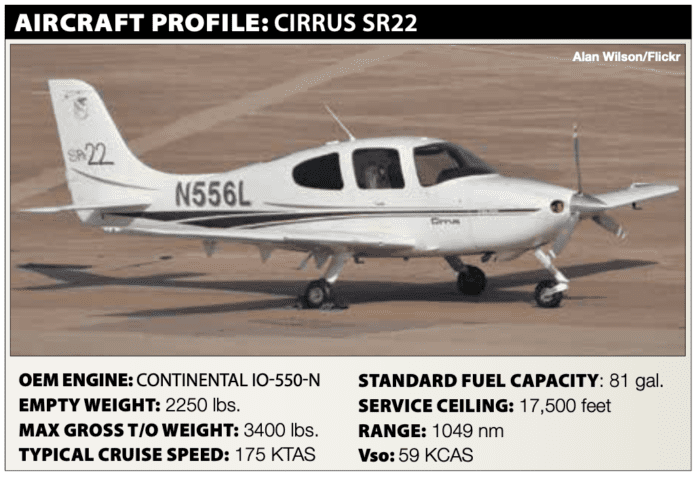That aviation is a highly regulated activity should come as no surprise to readers. Many other applicable rules are unwritten, developed by pilots after a mishap or mistake, which not necessarily resulted in an accident or incident. How we tackle becoming comfortable with new avionics aboard a familiar airplane is a question FAA regulations don’t address, but the unwritten rules offer some guidance: Good operating practices and a dollop of common sense argue strongly in favor of not launching into poor conditions without at least a few hours of experience with the new equipment.
I’ve not always followed that advice. When installation of my Garmin GNS 530 was complete, I performed a couple of local flights to verify GPS reception and other operational details, then launched from Hagerstown, Md., for New Orleans. The weather was good along that route, though, except for stiff headwinds. I spent the next several flight hours becoming familiar with the new toy and soon was comfortable enough with it that I was shooting approaches to minimums. I still have the 530, now upgraded to the 530W configuration and, in many ways, I’m still learning what it can do.
We don’t know what formal training the pilot in this month’s accident obtained before taking off on a long cross-country flight. It’s likely he at least got some basic instruction on the new unit from the avionics shop, but that can be hit or miss. He may have studied its operation and features before installation was complete. But he had never shot an instrument approach with the Avidyne navigator until arriving at his destination earlier that night. His second approach attempt wasn’t successful.

The FAA offers these suggestions for pilots who may find themselves fatigued:
Identify Fatigue
If you feel the urge to doze every time you sit down, you are likely fatigued. Symptoms include yawning, nodding off, attention lapses, difficulty concentrating and irritability. Run the IMSAFE checklist before engaging in aviation-related activities.
Manage Fatigue
If you feel fatigued, ground yourself until you’re better rested. Caffeine masks fatigue and is not a substitute for sleep. Some sleep is better than none, but catnaps can’t replace a good night’s sleep.
Prevent Fatigue
Establish good sleeping habits. A sleep log and many more countermeasures are online at mxfatigue.com.
BACKGROUND
On August 29, 2020, at about 0123 Central time, a Cirrus SR22 was destroyed when it collided with terrain near Lawrenceville, Ill., while executing an instrument approach. The solo instrument-rated private pilot (male, 44) was fatally injured. Night, low instrument conditions prevailed. The flight operated on an IFR flight plan.
The airplane departed Tampa, Fla., at about 2046 Eastern time the previous day, landing in Sullivan, Ind., at about 0126 Eastern, after completing an RNAV GPS approach. The pilot refueled and, at 0211 Eastern, departed on an IFR flight plan for Lawrenceville, Ill,, about 22 nm south. At about 0118 Central, the airplane crossed an initial approach fix and continued toward the final approach course. After ATC terminated radar service, there were no further communications from the pilot.
From 0118 to 0121 Central, the airplane descended and reduced airspeed as it continued toward the destination slightly west of the final approach course. After crossing the final approach fix at about 0121, the airplane descended from 2200 feet msl to 600 feet at an average rate of 800 fpm and an average groundspeed of 116 knots. The airplane’s final recorded altitude was 600 feet msl. When he failed to cancel IFR, ATC made multiple attempts to contact the pilot, which were unsuccessful.
INVESTIGATION
The airplane was located by search and rescue personnel at about 0730 that morning. The airplane had impacted wooded terrain about 1.5 miles north of the Runway 18 threshold. The debris path measured about 250 feet in length on a magnetic heading of 175 degrees. A post-impact fire ensued.
Examination revealed no evidence of any pre-impact malfunctions or failures that would have precluded normal operation. Flight control continuity could not be confirmed due to multiple separations and thermal damage. There was no evidence of in-flight deployment of the airframe parachute. Due to impact and fire damage, no data from the avionics’ nonvolatile memory was available.
The accident pilot and another individual purchased the airplane the previous month. The pilot, with instruction provided by a Cirrus-standardized instructor, completed 4.5 hours of ground school and 12.2 hours of training in the accident airplane, which concluded 15 days before the accident. He had flown 45.6 hours in the accident airplane, consisting of 9.1 hours at night, 1.8 hours in IMC and seven instrument approaches.
Earlier on the day he departed Tampa, the airplane’s Garmin GNS 430W GPS/NAV/COM system was replaced with an Avidyne IFD 440.The accident flight concluded with the pilot’s second instrument approach with the new avionics.
At 0041 Central time, the destination airport was reporting marginal VFR conditions, with visibility of six miles in mist, scattered clouds at 300 feet and an overcast at 1200 feet. The pilot filed a flight plan and obtained a weather briefing via ForeFlight at 0050 Central, but which aspects of the briefing the pilot reviewed before the flight could not be determined. At 0108 Central time, the destination airport was reporting IFR conditions: visibility was 1½ miles in mist, with broken clouds at 200 feet and 1100 feet. At the time of the accident, Airmet Sierra called for IFR conditions over the accident site.
PROBABLE CAUSE
The NTSB determined the probable cause(s) of this accident to include: “The pilot’s controlled flight into terrain as a result of his failure to properly execute an instrument approach and maintain clearance from trees in night instrument meteorological conditions. Contributing to the accident was the pilot’s unfamiliarity with a newly installed avionics system.”
According to the NTSB, “Based on the wreckage distribution and the low visibility present at the time of the accident, it is likely that the airplane impacted trees and terrain as a result of the pilot’s controlled flight into terrain due to the improper execution of the instrument approach. The pilot’s lack of familiarity with a new avionics system likely contributed to his inability to maintain approach parameters in night instrument meteorological conditions.”
The accident flight’s ground track shows the airplane slightly right of course after leaving the final approach fix. That could mean anything, including the pilot’s decision to hand-fly the airplane. Whether as a result of distraction, inability to perform a needed operation or equipment failure, the pilot continued descending on the approach until colliding with terrain. Fatigue may also have been a factor.
Regardless, the pilot failed to complete the approach, even though he was well-experienced. We’ll never really know the extent to which a new piece of equipment contributed to this outcome.




